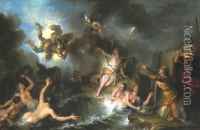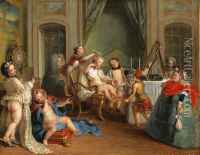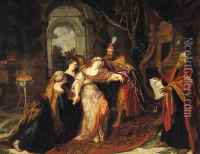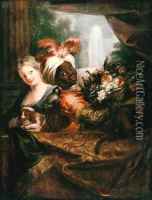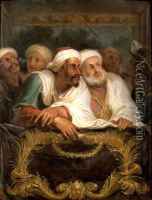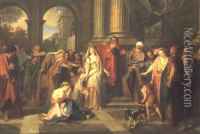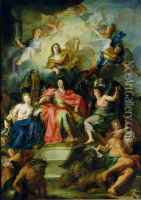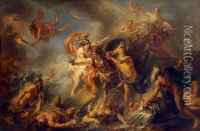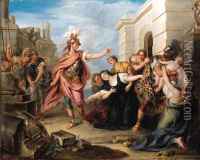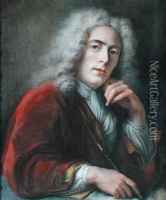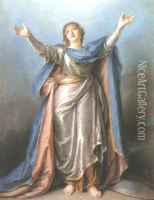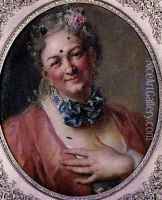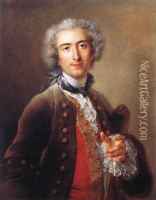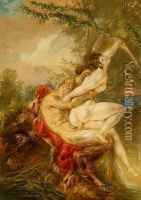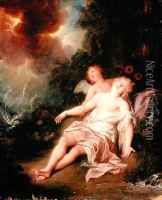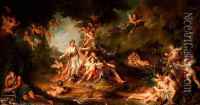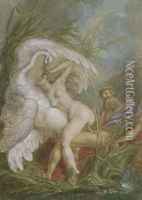Charles-Antoine Coypel Paintings
Charles-Antoine Coypel was a prominent French painter, engraver, and tapestry designer in the 18th century. Born on July 11, 1694, in Paris, France, he was the son of the painter Antoine Coypel and the grandson of Noël Coypel, both of whom were also respected artists of their times. This artistic lineage paved the way for Charles-Antoine's future in the arts, providing him with an environment rich in artistic influence and education from a young age.
Coypel's talent was evident early on, and he received formal training from his father. He became a member of the French Royal Academy of Painting and Sculpture at just 18 years of age and later was appointed as the official painter to the court of Louis XV. His career flourished under royal patronage, and he became known for his history paintings, which often depicted scenes from classical literature and the Bible.
In 1734, Coypel was awarded one of his most significant commissions, the creation of a series of tapestry cartoons for the Gobelins Manufactory, illustrating Miguel de Cervantes' novel 'Don Quixote.' These works were highly celebrated and contributed greatly to his fame. He became the director of the French Academy in Rome in 1747, a position that further affirmed his status as an influential figure in the art world of his time.
Coypel was also a talented writer and playwright, and his literary works complemented his artistic endeavors. His integration of poetic and narrative elements into his paintings was a testament to his multifaceted creativity.
Charles-Antoine Coypel's contributions to French art were significant, and he was instrumental in the development of the Rococo style, which emphasized grace, lightness, and elegance. His works were characterized by their vibrant color palette, dynamic compositions, and emotional expressiveness. Coypel passed away on June 14, 1752, in Paris, leaving behind a legacy that would influence future generations of artists.
